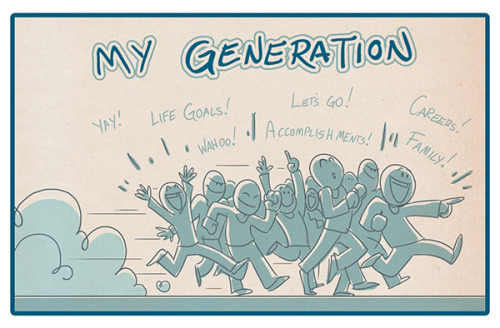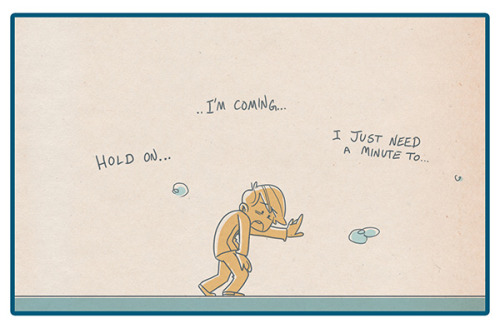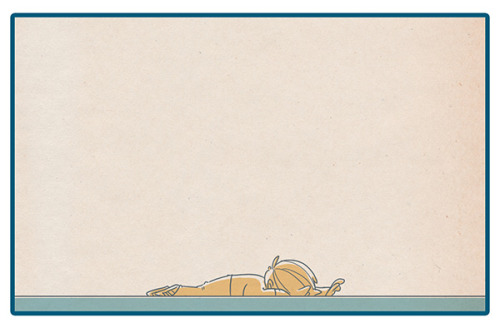So Listen. I’ve Had This Song Stuck In My Head For Two Days Now Because Of This Tweet. Look What

So listen. I’ve had this song stuck in my head for two days now because of this tweet. Look what they have done.



More Posts from Brushlesprouts and Others
someone give him a grammy
*strums guitar* I like to call this song "Terry Pratchett Should Be Required Reading, Jesus Christ He Didn’t Fuck Around"






Ha ha seriously tho.
Bow in reverance to the glowy crystal phallus!









It’s a celebration of LOVE!!
Something possessed me into making this cake so I enlisted the help of @cold-brew-colors since I can’t bake for shit. I drew most of the chocolate Zonda though. It was made in celebration of the release of Gunvolt 2!
The adorable little figure is the wonderful handiwork of @bupiti! She’s even more cute in-person!! Thanks again for her!
I feel this is terribly important to keep in mind if your world building includes a substantial time skip. Unless a given reason has stagnated the world, "100 years later" should show a drastically different world.
We went from horse and buggy to space in less then 100 years
Fact 1: In most versions of Dungeons & Dragons, when infected – as opposed to natural-born – lycanthropes transform under the full moon, they assume the default alignment of their type during the ensuing mindless rampage.
Fact 2: In most versions of Dungeons & Dragons, the default alignment of werebears is Lawful Good.
Conclusion: When an infected werebear transforms under the full moon, they go on a mindless Lawful Good rampage.

Day 3- We are tip-toing closer to Halloween and I got a case of the Morbs. I hope the quality is everything you have come to expect of me.
Don't get cooked, use your specials in Round 3!

Opinion: I take too many Spammin’ Run shifts. ( Profresh 700 was my highest at a point, aiming for 999 one day!) Have a draw of my feels towards these coworker squiddos.
Avoiding Info-Dumps and Boring Exposition
Exposition can be many things in a story: character backstory, definitions, history, etc., and it’s a necessary part of any narrative. Yes, it’s “telling” instead of “showing”, but there are times when you have to “tell” to aid with pacing, detail, and most important of all, reader comprehension.
Your readers don’t know what’s in your head; they know what’s on the paper.
So you have to give exposition (though some stories will be heavier than others) and you have to do it well or your readers won’t care enough to pay attention. Exposition is not something to just shove aside or box away with an “icky” label on it because it affects the quality of the story as a whole. If you write it well, it can enhance the story rather than detract from it– which should be the goal of any element of writing.
Learning to write better exposition makes you a better writer in general, and part of writing better exposition means understanding the main problems and the solutions.
What is an “info-dump?”
Simply put, “large amounts of information that don’t directly matter to the moment of the scene”. They can be seen as reflections on backstory or facts about the characters or world, specifically in large quantities.
Three commonly seen methods of info-dumping are the chapter-start block, the monologuing narrator, and the rambling narrator. (Note: the names are not official, just what I personally call them.)
The chapter-start block is when the writer starts each new scene or chapter by giving all the backstory and relevant information at the very beginning, then running off and writing the scene while hoping the reader can remember everything. That kind of writing is often the result of “I want to get to the interesting story so I’ll take care of the boring setup first”. Guess what, your readers agree. They don’t care about your exposition because you’re presenting it in a boring way, and now they may not be able to get into the actual story because they don’t understand it as well as they could. While starting a new chapter or scene with exposition isn’t necessarily bad, large qualities of information are.
The monologuing narrator is exactly what it sounds like: the narrator talks at the reader for an extended amount of time. This info-dump can be found at any point of a scene, but it still gives way too much information at once. It also sometimes presents its own problem of timing, because the narrators shouldn’t be “zoning out to think about things” in the middle of a scene unless that detail weighs very heavily on them. Narration shows train of thought and the monologuing narrator usually needs to chill. (There are times when monologues are acceptable, but writing one primarily to deliver background information is not acceptable use.)
Similar to the monologuing narrator in that character thought takes over the scene, the rambling narrator has an additional problem in that they often go off-topic or into detail that isn’t necessary for the moment. While the occasional “ramble” can be used to show character personality, a writer can’t expect readers to actually learn from that ramble. Large amounts of information aren’t easy to digest, especially when everything is presented at the same time.
Avoiding the info dump.
Keep all information in context.
If your scene is about a character going for a job interview, don’t start mentioning their dead sister unless there’s an important connection that’s immediately relevant. Only reveal what makes sense to reveal within the events and flow of the scene. It’s true that the lines can get blurry when you’re working with a story that has interconnected elements, but early on you want to keep exposition in careful balance with the forward momentum of the narrative. Later on, once your readers are already hooked, you can ease up a little on the withholding and start exploring details– but keeping things contextual will still always be an important guideline to follow.
Use prompts for information.
Prompts are things like people, situations, in-story objects or moments that ‘remind’ the narrator of the piece of exposition. Part of avoiding never-ending, rambling, or irrelevant exposition involves using setting and plot to prompt information from the narrator’s mind, rather than just dump it all out at once. Prompts help shows connections and grant relevance by tying the information into the current scene and moment.
Narrator perspective guides exposition.
The narrative point of view helps ground the reader’s new information by presenting it through the eyes of the person they are following. This does mean that your audience can get biased info, but that’s part of the nature of storytelling; it’s not a documentary. Similar to using prompts, narrator perspective helps guide exposition by presenting information that’s relevant to the narrator and their personal story.
Use a “weaving” techniques to avoid giant blocks of text.
It’s best to weave your exposition between dialogue, thought, and action to write in a way that’s engaging and informative. Think of it like being in a class. If your professor spends the whole hour giving a lecture off slides, chances are you might be overwhelmed at times and tune out a bit. If they introduce an activity and give smaller lectures to explain the science behind the steps, then you are more likely to pay attention and not feel as overwhelmed. Writing works the same way. The best results are typically found when the activity (story events that are “shown”) are blended with lecture (backstory/exposition that is “told”).
Generally, you want to practice a balance of dialogue, action, and exposition. Some scenes may be heavier in one category than the other, and that’s okay, but a balance of those elements helps with overall pacing and keeps readers engaged and more likely to learn.
Not everything needs explaining.
While there are certainly pieces of information that you have to “tell” for the story to make sense, there are times when “showing” can cut down on lengthy exposition and make for a more engaging narrative. Why have your narrator explain/“tell” about how they don’t get along with their mother when you can show the poor relationship through the way they interact? And don’t just keep it isolated to one scene, unless the story calls for it, because some parts of exposition stretch beyond individual moments and affect the entire story. It may be tempting to try and directly point everything out at once, but that’s a quick road to long-winded scenes of exposition that leave your characters and their plot behind.
Writing more interesting exposition.
For exposition to be interesting, it needs meaning, and meaning can be granted through context and the relevance to the current scene when the reader is not yet fully invested in your story. When presenting exposition, there are a few things that can be kept in mind:
Try and convey something about the character’s personality with the way they give information. We all have a personal take on things and so will a character, so let that personal perspective show via tone, word choice, fact detail, etc.
An interesting voice can carry a story decently far, especially when it comes to giving background information. It’s possible to have a character that sticks only to the facts, but without a bit of emotion behind that exposition, it can get dry really quickly. Your character needs to interact with their world, not be a robot that gives impartial explanations of everything.
If you repeat information, which is needed for anything with heavy detail, present it in different ways or at least don’t copy the wording.
Build on detail over time, and make sure to apply that detail to the scene to allow for contextual learning.
Tension tends to create reader interest. Giving exposition during tense moments can force a reader to learn on the spot– as long as it doesn’t distract from the scene.
Pace yourself. Part of boring exposition is tied into how much is presented at once, and while info-dumps can be identified and avoided with relative ease, you still have to watch how much information is being presented in a scene or chapter. Even if you “weave” it correctly, there’s still a chance that it’s too much for a reader to reasonably digest.
Good luck with your work and if there are any questions, drop them in my ask box and I’ll see how I can help. Just please read my Rules and Considerations page to make sure I’m the best resource, and consider a Gift of Coffee to grant me an energy boost, if you’re feeling generous.
Reposting for the tags. #agreement

I’m gonna try this thing where I post more frequently with whatever I drew for the day, whether I’m satisfied with it or not. Bear with me. Or just be a bear. That works too.
-
 annal80pf liked this · 6 months ago
annal80pf liked this · 6 months ago -
 cheloneuniverse liked this · 1 year ago
cheloneuniverse liked this · 1 year ago -
 cha-gyu liked this · 1 year ago
cha-gyu liked this · 1 year ago -
 lordterronus liked this · 1 year ago
lordterronus liked this · 1 year ago -
 friends-fam-fiends-hellothere liked this · 1 year ago
friends-fam-fiends-hellothere liked this · 1 year ago -
 starsaligninorbit liked this · 1 year ago
starsaligninorbit liked this · 1 year ago -
 sunsetatthedawn liked this · 1 year ago
sunsetatthedawn liked this · 1 year ago -
 polishbarnowl reblogged this · 1 year ago
polishbarnowl reblogged this · 1 year ago -
 bekkaa reblogged this · 1 year ago
bekkaa reblogged this · 1 year ago -
 darkhopesandbrightnightmares reblogged this · 1 year ago
darkhopesandbrightnightmares reblogged this · 1 year ago -
 solmirror reblogged this · 1 year ago
solmirror reblogged this · 1 year ago -
 solmirror liked this · 1 year ago
solmirror liked this · 1 year ago -
 amonkeywhoisastudent liked this · 1 year ago
amonkeywhoisastudent liked this · 1 year ago -
 queen-of-the-slayers reblogged this · 1 year ago
queen-of-the-slayers reblogged this · 1 year ago -
 halfblackwolfdemon reblogged this · 1 year ago
halfblackwolfdemon reblogged this · 1 year ago -
 halfblackwolfdemon liked this · 1 year ago
halfblackwolfdemon liked this · 1 year ago -
 the-witchhunter reblogged this · 1 year ago
the-witchhunter reblogged this · 1 year ago -
 filkovaariik liked this · 1 year ago
filkovaariik liked this · 1 year ago -
 justaleafinthewind liked this · 1 year ago
justaleafinthewind liked this · 1 year ago -
 nanasomethingchaotic liked this · 2 years ago
nanasomethingchaotic liked this · 2 years ago -
 freefallinginair reblogged this · 2 years ago
freefallinginair reblogged this · 2 years ago -
 codymorrow94 liked this · 2 years ago
codymorrow94 liked this · 2 years ago -
 judemasquerade reblogged this · 2 years ago
judemasquerade reblogged this · 2 years ago -
 judemasquerade liked this · 2 years ago
judemasquerade liked this · 2 years ago -
 redemptioninchaos reblogged this · 2 years ago
redemptioninchaos reblogged this · 2 years ago -
 redemptioninchaos liked this · 2 years ago
redemptioninchaos liked this · 2 years ago -
 platosredhairedstepchild liked this · 2 years ago
platosredhairedstepchild liked this · 2 years ago -
 andaspoonfulofangst-whoops reblogged this · 2 years ago
andaspoonfulofangst-whoops reblogged this · 2 years ago -
 andaspoonfulofangst-whoops liked this · 2 years ago
andaspoonfulofangst-whoops liked this · 2 years ago -
 boricrook liked this · 2 years ago
boricrook liked this · 2 years ago -
 yellosubbub liked this · 2 years ago
yellosubbub liked this · 2 years ago -
 doctornika reblogged this · 2 years ago
doctornika reblogged this · 2 years ago -
 cakehamster reblogged this · 2 years ago
cakehamster reblogged this · 2 years ago -
 cakehamster liked this · 2 years ago
cakehamster liked this · 2 years ago -
 whatsupbuttercupss liked this · 2 years ago
whatsupbuttercupss liked this · 2 years ago -
 stardust-is-demented-andinlove liked this · 2 years ago
stardust-is-demented-andinlove liked this · 2 years ago -
 cjtheghost-14 liked this · 3 years ago
cjtheghost-14 liked this · 3 years ago -
 notoriginalenoughtohavmyprefname liked this · 3 years ago
notoriginalenoughtohavmyprefname liked this · 3 years ago -
 sodasilks liked this · 3 years ago
sodasilks liked this · 3 years ago -
 luna-cielle liked this · 3 years ago
luna-cielle liked this · 3 years ago -
 oneworldforeverwithyou2 reblogged this · 3 years ago
oneworldforeverwithyou2 reblogged this · 3 years ago